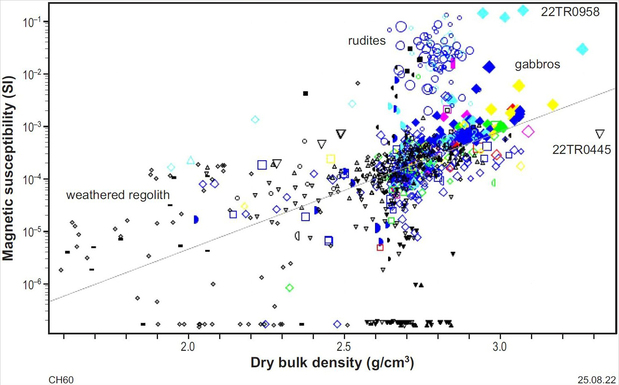Petrophysics is the study of the physical and chemical properties of rocks and their contained fluids.
Following a pilot project in 2020–21, the Geological Survey of Western Australia (GSWA) is embarking on a long-term strategic program of systematic petrophysical measurement of drillcore samples from significant mineral deposits, poorly explored regions, and reference stratigraphic drillholes. The long-term objective of this program is to acquire a broad suite of data to define the petrophysical characteristics of key lithostratigraphic units, alteration patterns or major mineral system environments. It is anticipated that 1000–2000 samples will be analysed annually.

The program is funded through the Western Australian Government Exploration Incentive Scheme and will enable more informed decision making for the resources exploration industry, government agencies and solid Earth sciences research in Western Australia.
Currently, the properties acquired during petrophysical analysis are:
- magnetic susceptibility
- remanent magnetization
- dry bulk density
- apparent porosity
- galvanic resistivity
- induced polarization
- inductive conductivity
- P-wave sonic velocity
- acoustic impedance
- gamma ray.
Additional properties might be acquired in the future as the program evolves.
Current data and reports can be found in the MAGIX database:
- GSWA Petrophysics 2023: Canning Basin, Perth Basin, Tanami Basin and South West Yilgarn Terrane (72608)
- GSWA Petrophysics 2023: Officer Basin, South West Yilgarn and Youanmi Terrane (72561)
- GSWA Petrophysics 2023: Yilgarn Craton compilation (72512)
- GSWA Petrophysics 2023: Youanmi and Southwest Terranes (72494)
- GSWA Petrophysics 2023: Perth Basin (72493)
- GSWA Petrophysics 2023: Paterson compilation (72482)
- GSWA Petrophysics 2023: Eucla compilation (72466)
- GSWA Petrophysics 2022–23: Youanmi Terrane, Kurnalpi Terrane and Nifty Drillholes (72383)
- GSWA petrophysics 2021–22: Mt. Weld, Paterson Orogen, Southwest Yilgarn, Madura Province, Kalgoorlie Terrane and Albany–Fraser Orogen (72201)
- GSWA petrophysics 2021: Eastern Goldfields (72029)
- GSWA petrophysics 2020–21: Eucla, Paterson, West Arunta (72014)
Publications
-
 Report 246 Regional petrophysics: Youanmi and Southwest Yilgarn Terranes 2022-23
Report 246 Regional petrophysics: Youanmi and Southwest Yilgarn Terranes 2022-23
-
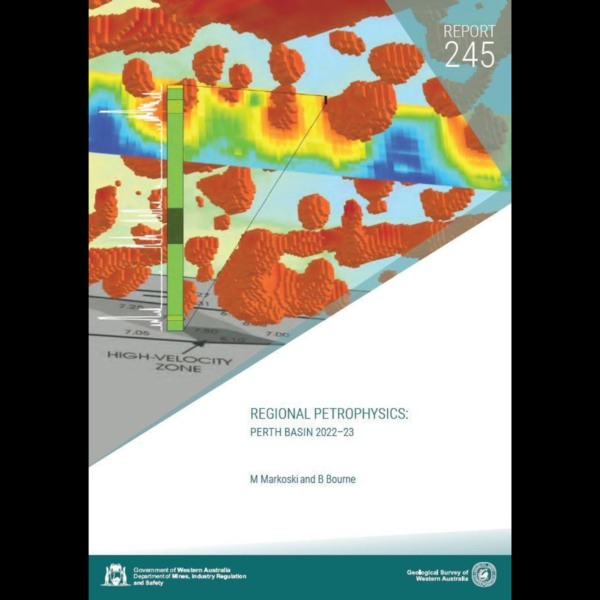 Report 245 Regional petrophysics: Perth Basin 2022-23
Report 245 Regional petrophysics: Perth Basin 2022-23
-
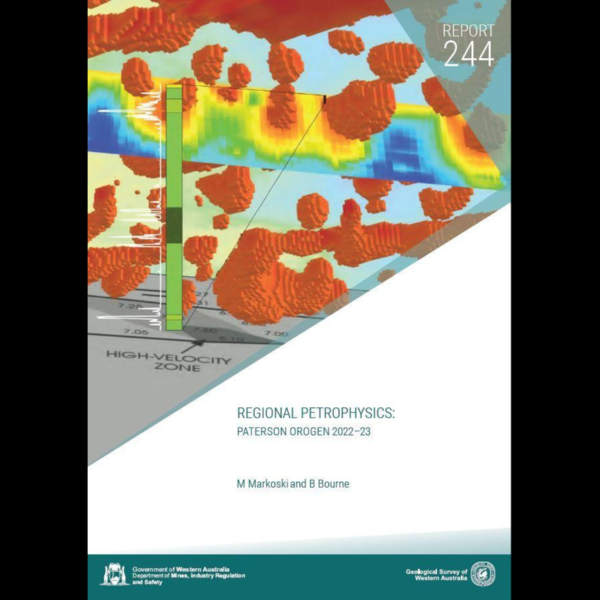 Report 244 Regional petrophysics: Paterson Orogen 2022-23
Report 244 Regional petrophysics: Paterson Orogen 2022-23
-
 Report 242 Regional petrophysics: Eucla Basin and Basement 2022-23
Report 242 Regional petrophysics: Eucla Basin and Basement 2022-23
-
 Report 238 Regional petrophysics: Mt Weld 2021-22
Report 238 Regional petrophysics: Mt Weld 2021-22
-
 Report 225 Regional petrophysics: Yamarna Terrane 2020–21
Report 225 Regional petrophysics: Yamarna Terrane 2020–21
-
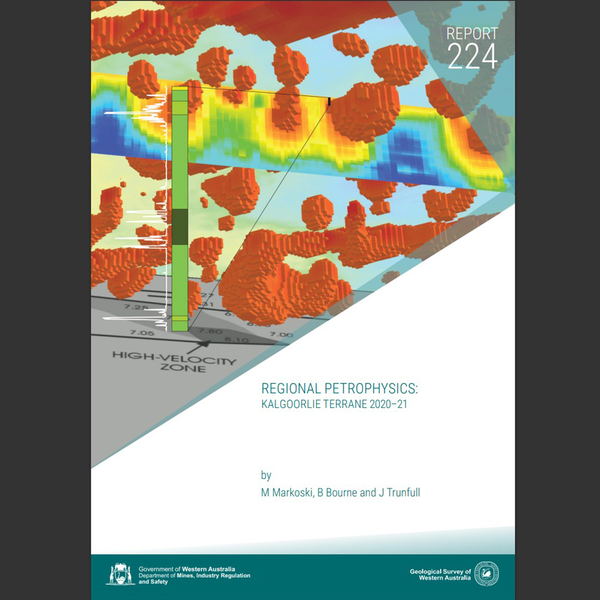 Report 224 Regional petrophysics: Kalgoorlie Terrane 2020–21
Report 224 Regional petrophysics: Kalgoorlie Terrane 2020–21
-
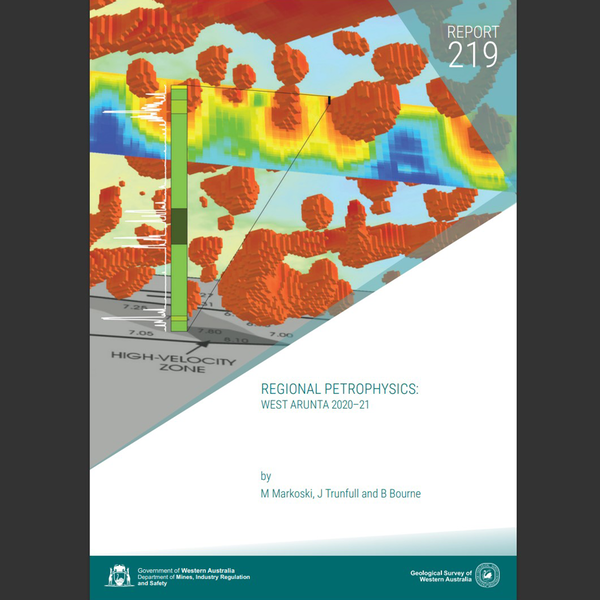 Report 219 Regional petrophysics: West Arunta 2020–21
Report 219 Regional petrophysics: West Arunta 2020–21
-
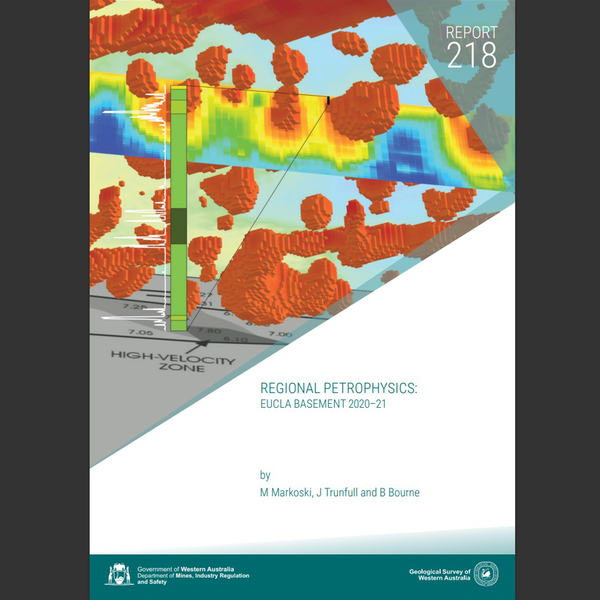 Report 218 Regional petrophysics: Eucla basement 2020–21
Report 218 Regional petrophysics: Eucla basement 2020–21
-
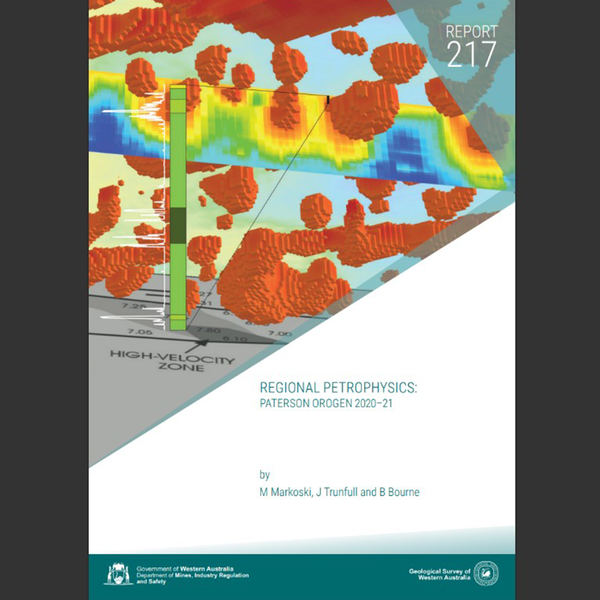 Report 217 Regional petrophysics: Paterson Orogen 2020–21
Report 217 Regional petrophysics: Paterson Orogen 2020–21
Contact
For further information contact:
geophysics@dmirs.wa.gov.au


